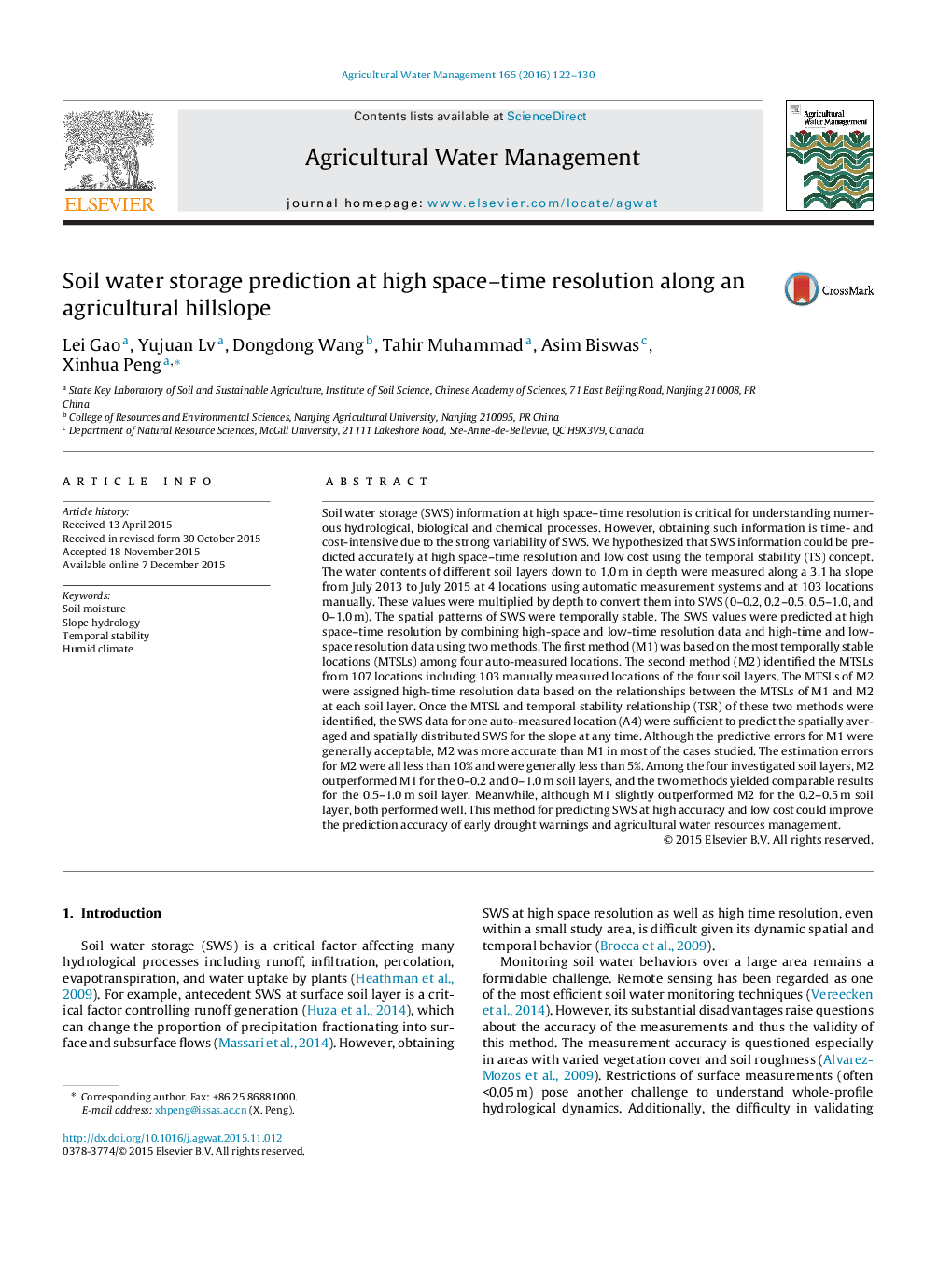| Article ID | Journal | Published Year | Pages | File Type |
|---|---|---|---|---|
| 4478306 | Agricultural Water Management | 2016 | 9 Pages |
•Time resolution determined the estimation accuracy of soil water storage (SWS) at the studied slope.•SWS information could be predicted accurately at high resolution and low cost.•Temporal stability technique is effective for balancing the cost and accuracy in Chinese red soil area.
Soil water storage (SWS) information at high space–time resolution is critical for understanding numerous hydrological, biological and chemical processes. However, obtaining such information is time- and cost-intensive due to the strong variability of SWS. We hypothesized that SWS information could be predicted accurately at high space–time resolution and low cost using the temporal stability (TS) concept. The water contents of different soil layers down to 1.0 m in depth were measured along a 3.1 ha slope from July 2013 to July 2015 at 4 locations using automatic measurement systems and at 103 locations manually. These values were multiplied by depth to convert them into SWS (0–0.2, 0.2–0.5, 0.5–1.0, and 0–1.0 m). The spatial patterns of SWS were temporally stable. The SWS values were predicted at high space–time resolution by combining high-space and low-time resolution data and high-time and low-space resolution data using two methods. The first method (M1) was based on the most temporally stable locations (MTSLs) among four auto-measured locations. The second method (M2) identified the MTSLs from 107 locations including 103 manually measured locations of the four soil layers. The MTSLs of M2 were assigned high-time resolution data based on the relationships between the MTSLs of M1 and M2 at each soil layer. Once the MTSL and temporal stability relationship (TSR) of these two methods were identified, the SWS data for one auto-measured location (A4) were sufficient to predict the spatially averaged and spatially distributed SWS for the slope at any time. Although the predictive errors for M1 were generally acceptable, M2 was more accurate than M1 in most of the cases studied. The estimation errors for M2 were all less than 10% and were generally less than 5%. Among the four investigated soil layers, M2 outperformed M1 for the 0–0.2 and 0–1.0 m soil layers, and the two methods yielded comparable results for the 0.5–1.0 m soil layer. Meanwhile, although M1 slightly outperformed M2 for the 0.2–0.5 m soil layer, both performed well. This method for predicting SWS at high accuracy and low cost could improve the prediction accuracy of early drought warnings and agricultural water resources management.
